Idea by
Toufic Rifai; Richard Ingersoll PhD
Call for ideas 2020
Refugee Roulette
Refugee Roulette
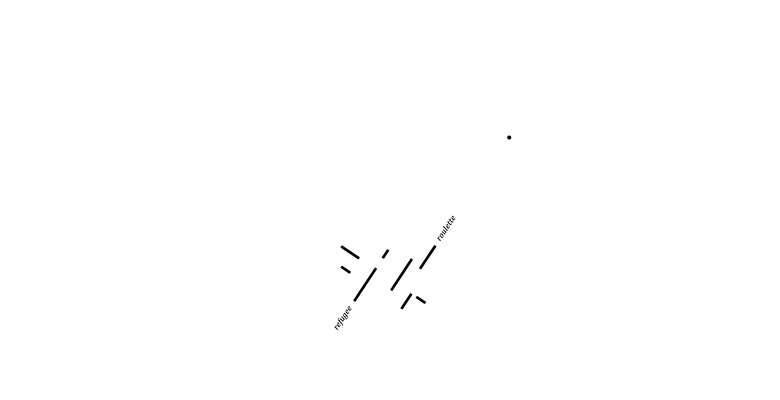
- New alliances
The recent conflicts around the world, has multiplied by more than ten the number of asylum-seekers. The constant inhibition of access and agency for refugees breeds a tragic, suspended existence in which the normal activities of work, commerce, education are only possible through subterfuge. Housing is often a tent, sometimes a prefab structure, but never a place to call home.
The plight of asylum-seekers can be found throughout the world; the displacement of people through wars, politics, environmental disasters, and discrimination has become a global phenomenon that doubled in the past decade to roughly 70 million. And, especially due to the effects of the climate crisis, is expected by UN agencies to increase incrementally.
The desired effect of the proposal is to create a relationship between individuals, to instill in the visitor a certain responsibility to learn more about life in the settlements, the creative factors, and perhaps construct a stronger opinion about the future
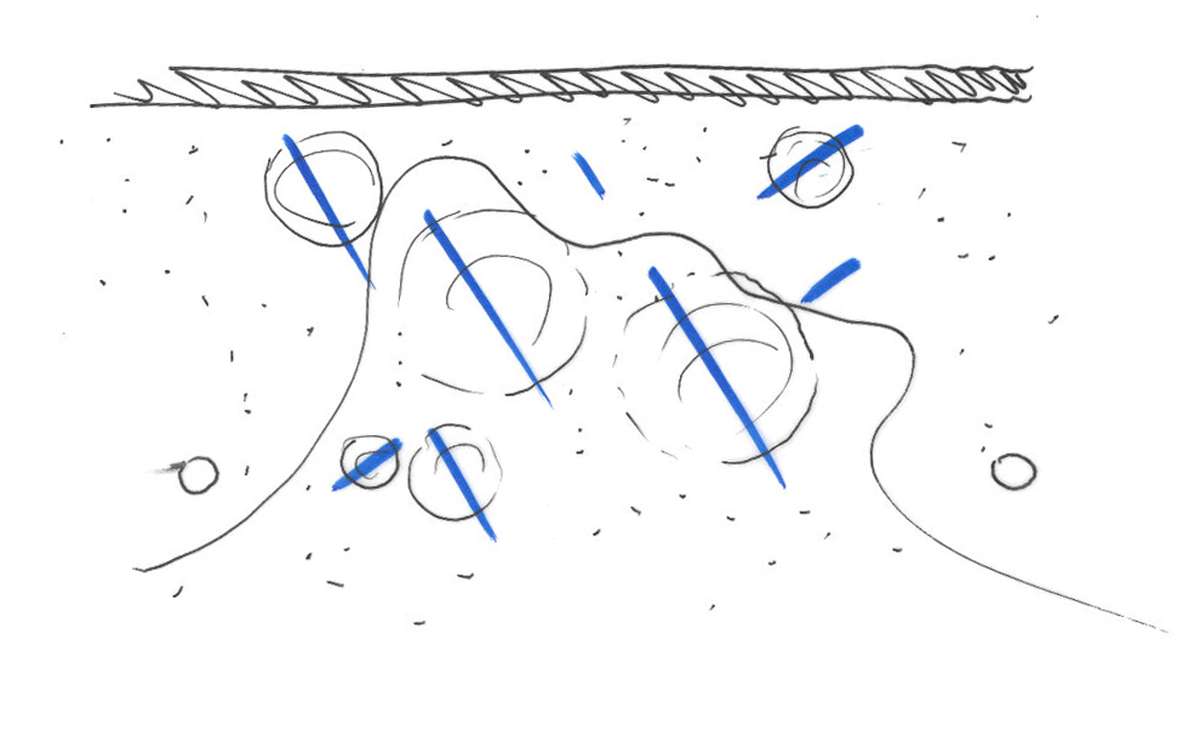
The installation we propose will be primarily made of the same canvas used for for refugee tents, shaped into panels, stretched on metal frames. Instead of forming a classic four-sided space with a pitched roof, the panels, each set on a swivel, will rotate mechanically into three different configurations.

When they are all set horizontally, the effect will be like a barrier. When they are turned 90 degrees the pavilion will seem like a maze. And when they are turned 180 degrees they form gateways. The gateways focus on one of our case studies, the works of Armenian Lebanese artist, Paul Guiragossian (1926-1993), an exile, who lived in Palestine and Lebanon. The theme of many of his works deals with refugees and represents the creative spirit that we want to investigate in the pavilion.
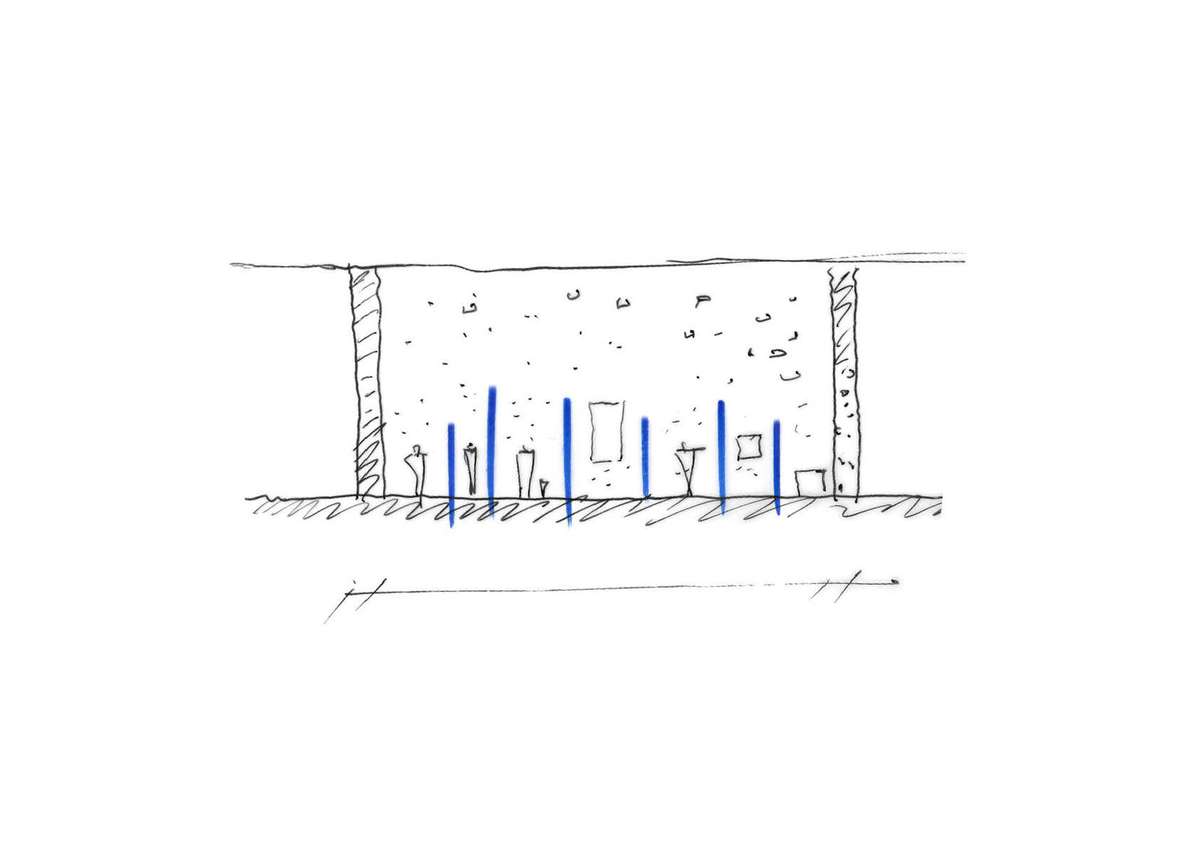
The exterior facades of the panels will be stenciled with provocative facts relating to the political, social, and environmental conditions of the refugee settlements, while the interior facades will carry photographs of education, music, art and architecture as found in the settlements. Thus, the pavilion will be transformable during the hours of the day, depending on the number of people inside the pavilion.

Refugee Roulette will be an interactive installation. At each end of the pavilion there will be a roulette wheel, where a croupier will set a ball spinning in the wheel for each player. When the ball lands on a number it triggers the projection of an image of a face of a refugee and a name. The player is then issued a card with the name, age, location, occupation of the chosen refugee, plus a QR code that when opened will reveal that person’s biography and clips to learn how they relate to them.
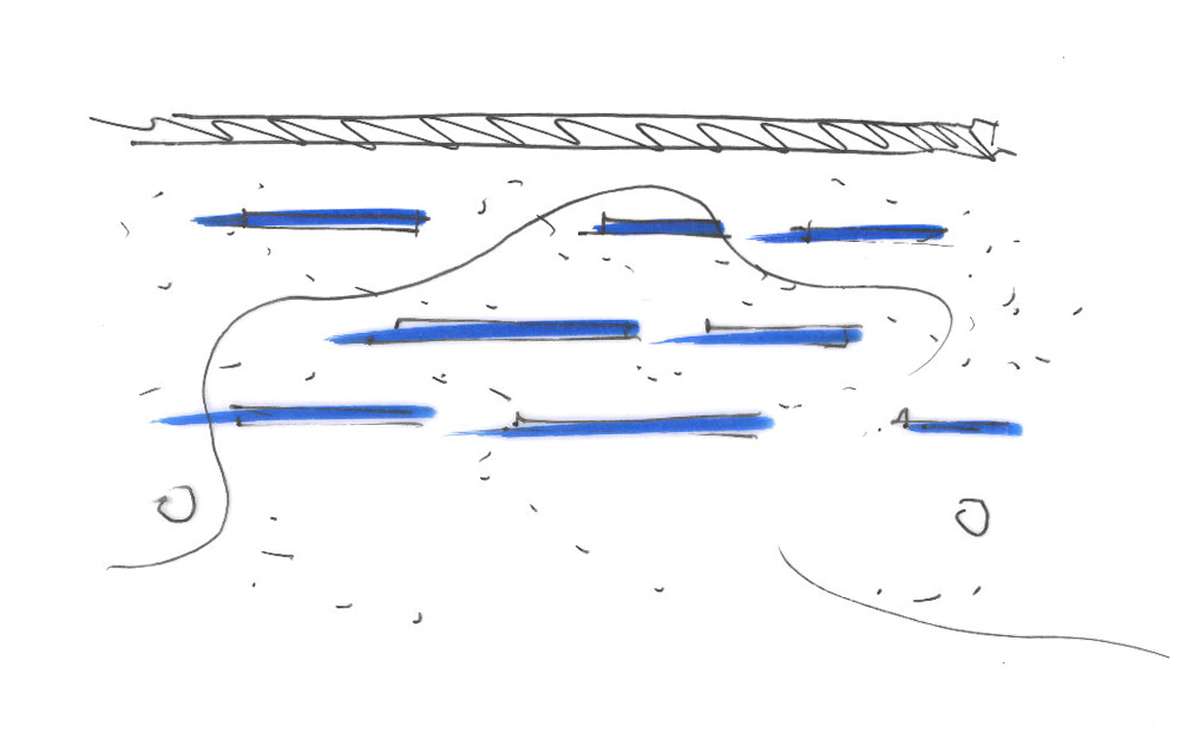
The player thus will discover by chance about a creative individual, just as most refugees are destined by chance to the camps. The player does not win or lose material things, but enters into an unexpected relationship with an unknown settlement dweller, who, although they were dealt a bad chance in life to end up as a refugee, has found a way to survive, a creative alternative to stagnation.
Refugee Roulette
Refugee Roulette

- New alliances
The recent conflicts around the world, has multiplied by more than ten the number of asylum-seekers. The constant inhibition of access and agency for refugees breeds a tragic, suspended existence in which the normal activities of work, commerce, education are only possible through subterfuge. Housing is often a tent, sometimes a prefab structure, but never a place to call home.
The plight of asylum-seekers can be found throughout the world; the displacement of people through wars, politics, environmental disasters, and discrimination has become a global phenomenon that doubled in the past decade to roughly 70 million. And, especially due to the effects of the climate crisis, is expected by UN agencies to increase incrementally.
The desired effect of the proposal is to create a relationship between individuals, to instill in the visitor a certain responsibility to learn more about life in the settlements, the creative factors, and perhaps construct a stronger opinion about the future
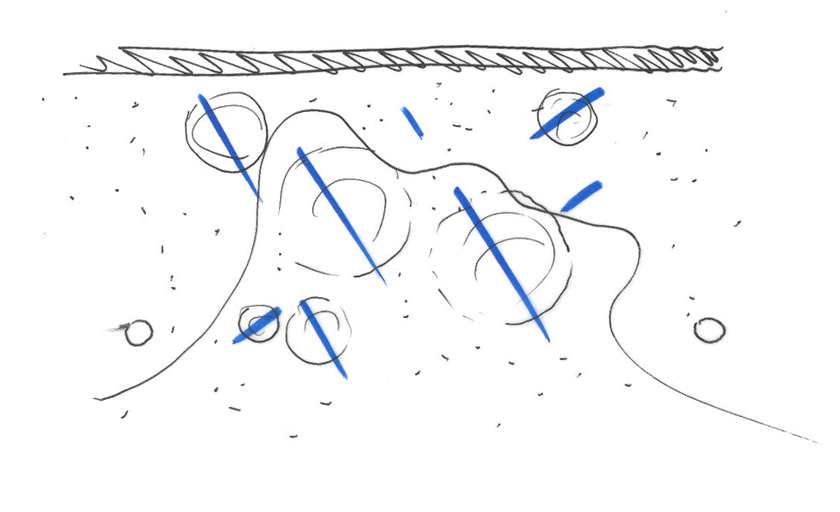
The installation we propose will be primarily made of the same canvas used for for refugee tents, shaped into panels, stretched on metal frames. Instead of forming a classic four-sided space with a pitched roof, the panels, each set on a swivel, will rotate mechanically into three different configurations.
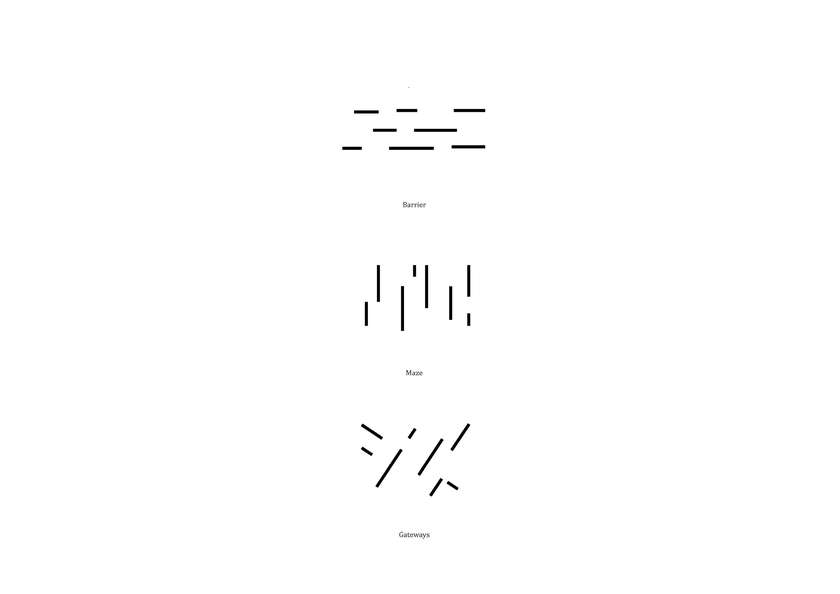
When they are all set horizontally, the effect will be like a barrier. When they are turned 90 degrees the pavilion will seem like a maze. And when they are turned 180 degrees they form gateways. The gateways focus on one of our case studies, the works of Armenian Lebanese artist, Paul Guiragossian (1926-1993), an exile, who lived in Palestine and Lebanon. The theme of many of his works deals with refugees and represents the creative spirit that we want to investigate in the pavilion.
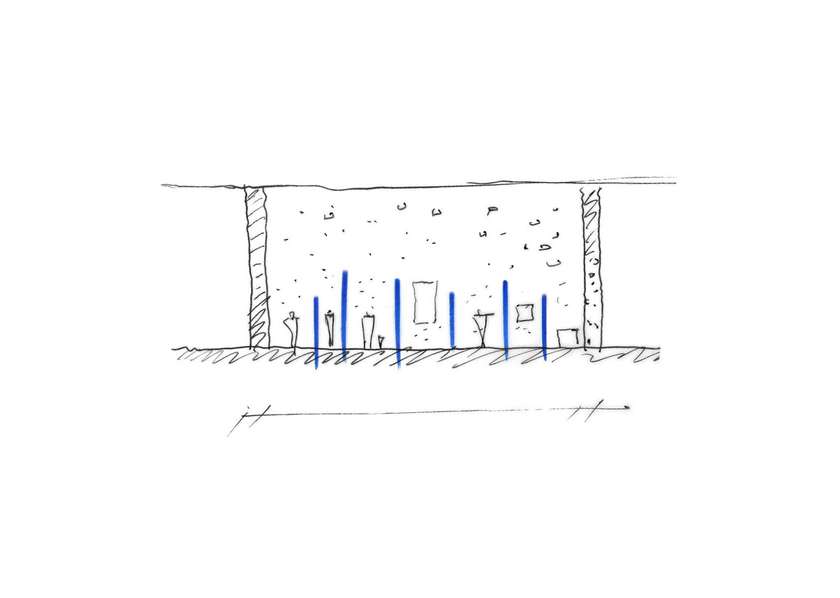
The exterior facades of the panels will be stenciled with provocative facts relating to the political, social, and environmental conditions of the refugee settlements, while the interior facades will carry photographs of education, music, art and architecture as found in the settlements. Thus, the pavilion will be transformable during the hours of the day, depending on the number of people inside the pavilion.
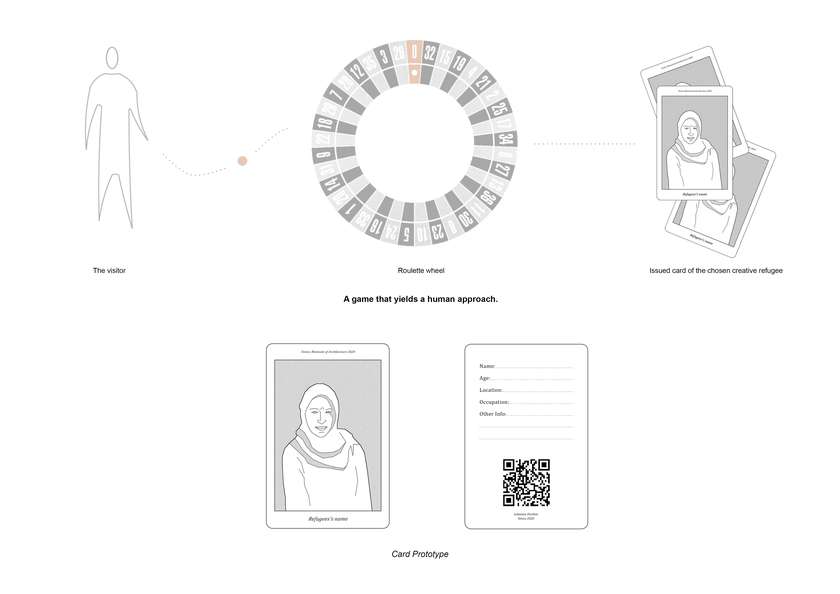
Refugee Roulette will be an interactive installation. At each end of the pavilion there will be a roulette wheel, where a croupier will set a ball spinning in the wheel for each player. When the ball lands on a number it triggers the projection of an image of a face of a refugee and a name. The player is then issued a card with the name, age, location, occupation of the chosen refugee, plus a QR code that when opened will reveal that person’s biography and clips to learn how they relate to them.
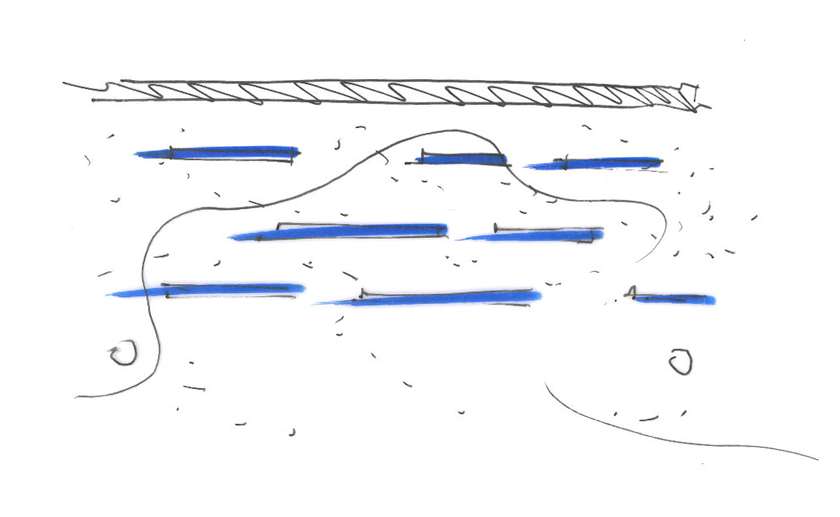
The player thus will discover by chance about a creative individual, just as most refugees are destined by chance to the camps. The player does not win or lose material things, but enters into an unexpected relationship with an unknown settlement dweller, who, although they were dealt a bad chance in life to end up as a refugee, has found a way to survive, a creative alternative to stagnation.